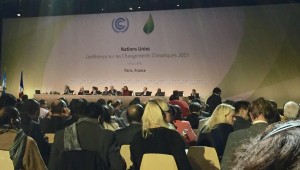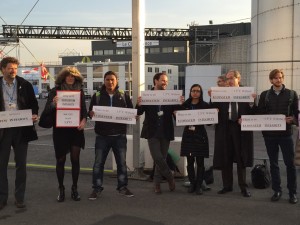Multilateral Development Banks and Climate Finance: More Words Than Action
Originally published on the SDG Knowledge Hub, a project by the International Institute for Sustainable Development. Shared here with permission from author.

By Dr. Ayse Kaya, Professor, Swarthmore College; Adjunct Professor, The Wharton School
Multilateral development banks (MDBs) dispense concessional and non-concessional funding for development to low- and middle-income countries. A growing obstacle in the way of development and poverty-reduction is climate change’s adverse impacts. In this context, the World Bank and its peer regional institutions, such as the Asian Development Bank (ADB) and the African Development Bank (AfDB), have an increasingly important role to play in channeling their financial resources for climate-related projects in member countries. Yet, they are lagging behind in the provision of multilateral climate finance and need to become more transparent and rigorous in their extant approaches.
Like other forms of climate finance, multilateral financial flows can help developing countries undertake low-carbon growth paths and reduce their emissions, while advancing their ability to resist the current impacts of climate change, namely facilitating adaptation and resilience. The World Bank, for instance, mentions the desire to deliver clean energy – where electricity is currently lagging – to facilitate green growth. Adaptation takes on different forms, but often requires expensive interventions, such as the building of new, more climate-resistant infrastructure. Thus, there is a great need for money, especially for the most vulnerable communities within the most impacted but poor pockets of countries.
MDBs possess great potential to lead in climate finance: they have capital at their disposal and can raise additional money through international markets. For example, the main lending arms of the World Bank, the International Bank for Reconstruction and Development (IBRD) and the International Development Association (IDA), had committed a total of over 40 billion USD in fiscal year 2021 (as of July 2022). Aware of their own role in climate finance, MDBs have released joint reports on their climate finance flows since 2011. They have additionally published a joint assessment framework for complying with the 2015 Paris Agreement, in which they have sketched out project activities regarded as “Paris-aligned” versus non-aligned. Many MDB reports also contain numerous references to the SDGs.
More Data, More Money
Alas, this combination of capacity-to-lead and self-professed desire to do so, have not translated into adequate action. MDBs’ efforts to fulfill their potential in climate finance are plagued by a lack of transparently tracked, detailed data and lagging financial commitments.
The MDBs’ joint reports include aggregate numbers on what each bank committed (in the past) as climate finance. However, there is no project-level dataset available to accompany these reports. Such a dataset is essential for others to hold these institutions accountable – without knowing how their flows for climate change are precisely being accounted for, we have to take the MDBs for their word. In national contexts where external financing can easily be diverted to new ends or wasted through corruption, this transparency is doubly important for both national actors and international observers.
Even when we take the joint reports at their face value, however, the pattern that emerges suggests that MDBs have significant room to ratchet up their ambition in disbursing climate finance. The rich countries’ original promise at the 2009 Copenhagen climate summit (UNFCCC COP15) was for “USD 30 billion for the period 2010-2012 with balanced allocation between adaptation and mitigation” and then USD 100 billion annually by 2020 (emphasis added). The increase in MDBs’ finance from 2013 to 2020 has been unimpressive and bumpy: MDB climate finance only rose to USD 40 billion in 2018 and has since fallen to USD 35 billion in 2020. Further, in the same period, MDBs’ total climate finance remained less than one-third of total MDB operations.
This is particularly true for money for adaptation; most of the world’s poor live in areas most affected by climate change, and their lives remain dependent on activities that are disproportionately influenced by environmental shocks and degradation. Adaptation remains severely unfunded relative to mitigation, with MDBs generally committing close to two-thirds of the climate funds to mitigation and only one-third to adaptation. This asymmetric allocation toward mitigation should be rectified. Further, the concessional share of these multilateral flows remains relatively low: it has been consistently below 50% of total climate financing. This raises questions about multilateral climate finance adding to the debt burden, thereby defeating the purpose of bolstering capacity particularly for adaptation in the developing world.
What does increased ambition on the part of MDBs look like? For example, the World Bank should formally commit a significant share of its lending to climate-related activities and publicly announce a rigorous metric for designating the contribution of projects to this end. Additionally, the temptation to provide mitigation finance to the small emitters should be tamed: mitigation monies are praised for their contribution to global public goods, but save for the large emerging economies, the “adding the drops in the bucket” approach of many small mitigation projects in poor countries will fail to effectively reduce greenhouse gas (GHG) emissions. To be sure, the existing governance structures of MDBs may hamper their ability to boost multilateral climate finance. These banks tend to be top shareholder-driven, which means the key players need to converge on amping up MDBs’ climate finance.
New Oversight Committee for Climate Finance
These considerations also suggest that there could be a role for an MDB Climate Finance Oversight Committee, whose members could include technical experts and national and international representatives. While it is still incumbent on MDBs themselves to ramp up ambition in climate finance, such a committee could provide valuable guidance and support MDBs in:
- Making sure only strictly climate and environment-related funds are counted as climate finance. For example, MDBs’ general support for economic development, such as in strengthening education, should not count toward their climate finance goals;
- Overseeing that these flows do not add to the debt burden; and
- Reaching the most vulnerable populations within most vulnerable countries.
- Publishing an open database of detailed project-level data on climate- and environment-related projects pursued by the MDBs.
Since taking development seriously requires taking climate change seriously, by increasing their role in multilateral climate finance, MDBs can demonstrate the necessary institutional adaptation to fulfill their mandates.
This article was written for a Perry World House workshop on Global Climate Finance, held on 3 October 2022 in partnership with the Climate Center of the Environmental, Social and Governance (ESG) Initiative at the Wharton School of the University of Pennsylvania. This workshop was made possible in part by a generous grant from the Carnegie Corporation of New York. The views expressed in this article are solely the author’s and do not reflect those of Perry World House, Wharton School, the University of Pennsylvania, or the Carnegie Corporation of New York.
The author acknowledges Swarthmore’s Joel Dean fund and thanks her students, Sky Park and Kendall Praitis Hill, for their excellent research assistance.




